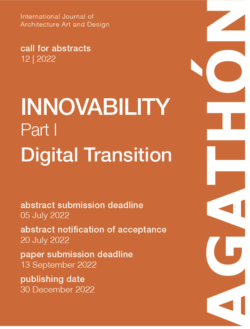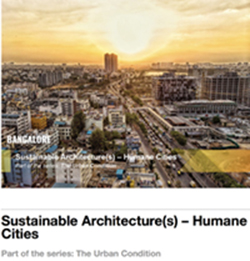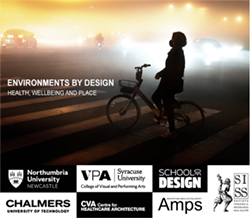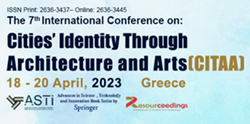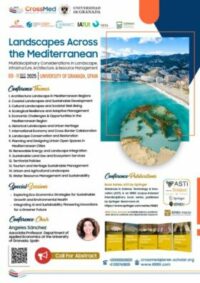ISSN (online): 1996-1073
Call of the Journal:
- A Holistic Overview of the Energy Sector | From Engineering Approaches to Innovative ML Solutions
- Active Power Filters and Power Quality
- Advanced Electric Vehicle Techniques
- Advanced Environmental Controls for High-Performance Buildings and Sustainability
- Advanced Solutions to Increase Resilience of Medium Voltage Distribution Networks
- Advanced Techniques to Increase Energy Efficiency by Optimization and Improving Power Quality
- Advances in Catalytic Technologies for Biodiesel Fuel Synthesis
- Advances in Fluid Power Systems
- Advances in Materials, Technologies and Controls for Sustainable Buildings
- Advances in Modelling for Nuclear Science and Engineering
- Big Data on Energy, Climate Change and Sustainability
- Building Sustainable Cities of the Future
- Community Microgrids
- Computational Modelling of Wave Energy Converters
- Condensation Heat Transfer
- Control of Wind Turbines
- COVID-19 Pandemics | Energy, Economic, Environmental, Social, Policy and Health Impacts
- Decarbonising Heating and Cooling
- Design and Application of Electrical Machines
- Design and Application of Innovation Catalysts for Hydrogenation
- Drilling Technologies for the Next Generations
- Dynamic Modelling and Control in Multilevel Converters
- Economic and Policy Challenges of the Energy Transition in CEE Countries
- Economic Growth and Environmental Degradation in the Paradigm of Energy Transition
- Electric Power Transmission | Active Subtransmission Networks
- Electric Vehicle Charging Networks
- Electrified Powertrains for a Sustainable Mobility | Topologies, Design and Integrated Energy Management Strategies
- Electrothermal Modeling of Solar Cells and Modules
- Embedded Discrete Fracture Model (EDFM) for Advanced Naturally and Hydraulically Fractured Reservoir Simulation
- Emerging Materials and Fabrication Methods for Solid Oxide Fuel Cells (SOFCs)
- Emerging Technologies for the Efficient Utilization of Coal and Biomass
- Energy and Environmental Sustainability 2020
- Energy Conversion and Operation Technologies for Smart Grid
- Energy Data Visualization
- Energy Flows and Synergies between Energy Networks
- Energy Management in the Multi-Source Systems
- Energy Transition and Social Innovation
- Environmental and Sustainable Built Environments
- Estimation of the State-of-Charge and State-of-Health of Lithium-Ion Batteries
- European Energy Policy at a Crossroads
- Future Electrical Machines
- Governance Strategies and Insights to Accelerate the Production and Diffusion of Hydrogen and Fuel-Cell Technologies
- Green Building Technologies 2020
- Heat and Mass Transfer in Multi-Phase Flows
- Heating, Cooling, and Ventilation Systems | Applications and Performance
- Improving Energy Efficiency through Data-Driven Modeling, Simulation and Optimization
- Integration of Electrical Vehicles and Renewable Energy Resources into Power Distribution Networks
- Interactive Integration of Electric Vehicles and Power Networks | Emerging Issues and Solutions
- Life Cycle Assessment of Environmental System
- Lifetime Extension of Wind Turbines and Wind Farms
- Machine-Learning Methods for Complex Flows
- Mechanical Industrial Plants for Solid Waste Treatment
- Modeling and Control of Hybrid Electric Vehicles
- Modelling of Multiphase Flows for Renewable Energy
- Multilevel Power Converters Control and Modulation Techniques
- Nanotechnology for Solar Energy Conversion
- Next Generation of Dye-Sensitized Solar Cells
- Novel Developments in Energy Resources Management, Distribution Systems, Microgrids and Energy Communities
- Numerical Simulation of Wind Turbine
- Optimal Design of Power Converters
- Optimization of Propulsion in Transport Means
- Organic Photovoltaics and Organic Transistors
- Performance and Reliability of Wide Bandgap Semiconductor and Nano Device-Based Circuits for Energy Systems
- Perovskite Solar Cells
- Photovoltaic Devices
- Protection and Communication Techniques in Modern Power Systems
- Protection of Future Multi-Terminal HVDC Grids
- Proton-Exchange Membrane Fuel Cells
- Real-Time Monitoring and Control for Wind Turbine Systems
- Recent Progress in Metal-Organic Frameworks for Energy-Related Applications
- Recent Studies in District Heating and Cooling Systems
- Research on Wireless Power Transfer System
- Sector Coupling for Sustainable Urban and Regional Energy Systems
- Selected Papers from the “20th CIRIAF National Congress | Sustainable Development and Preservation of Environment and Human Health”
- Smart Built Environment for Health and Comfort with Energy Efficiency
- Smart Technologies, Management and Control for Energy Systems and Networks
- Smart Thermostats for Energy Saving in Buildings
- Storages and Power Plant Flexibility for Improving Renewable Energy Penetration
- Systemic Issues to Wind and Solar Energy Deployment
- Technologies Conducive to Low Green House Gas Emission
- Thermal Management and Experimental Techniques for a Sustainable Mobility
- Thermal Storage Technologies
- Waste-to-Energy Technology Integrated with Carbon Capture
Jan
2021
Today, the ever-increasing energy demand and the tightening regulations for emissions control have caused a great interest in developing more efficient power generation systems. Amongst various types of fuel cells, the solid oxide fuel cell (SOFC) is considered as one of the most promising alternative techniques for developing prospective portable and stationary power systems. This is mainly because of the high energy conversion efficiency, diverse fuel versatility, great heat integration capability, acceptable power density, and environmentally friendly operability associated with the SOFC operation. Unlike other types of fuel cells, SOFCs do not require precious metals to operate and can, instead, efficiently work with Ni, Cu, Co, and other cheap and widely available transition and alkaline earth metals. Currently, yttria-stabilized zirconia (YSZ) is the state-of-the-art material used for fabrication of SOFCs. However, addressing the contemporary operational and fabrication requirements, such as shifting from electrolyte-supported to anode-supported geometry, lowering the operational temperature, and developing thin films and bi-layered electrolytes, necessitates the development of more robust materials for SOFCs. Therefore, the focus of this Special Issue of Energies will be on development of alternative SOFC materials and novel techniques for the fabrication of SOFCs. The key topics covered by this Special Issue include, but are not limited to the following: Nanostructured SOFC composites (e.g. nanorods, nanowires, nanotubes, etc.); Nanocrystalline SOFC powders and ceramic nanocomposites; Novel electrolytes materials and superionic mixed composites for SOFCs; Low-temperature SOFC/SOEC materials; Synthesis and characteristics of the SOFC anode, electrolyte, and cathode nanocomposites; Microstructural improvement of the SOFC supporting layers; Mixed ionic-electronic ceramic composites; Novel fabrication methods and stack design techniques; SOFC electrochemical performance and impedance analysis; Novel supporting metals for metal-supported SOFCs.
Keywords: solid oxide fuel cells; SOFC; ceramic nanocomposites; nanocrystalline SOFC powders; superionic electrolytes; low-temperature SOFCs; SOFC anodes; SOFC cathode composites; SOFC fabrication methods; metal-supported SOFCs; stack design; SOFC performance analysis.
Emerging Materials and Fabrication Methods for Solid Oxide Fuel Cells (SOFCs)
Today, the ever-increasing energy demand and the tightening regulations for emissions control have caused a great interest in developing more efficient power generation systems. Amongst various types of fuel cells, the solid oxide fuel cell (SOFC) is considered as one of the most promising alternative techniques for developing prospective portable and stationary power systems. This is mainly because of the high energy conversion efficiency, diverse fuel versatility, great heat integration capability, acceptable power density, and environmentally friendly operability associated with the SOFC operation. Unlike other types of fuel cells, SOFCs do not require precious metals to operate and can, instead, efficiently work with Ni, Cu, Co, and other cheap and widely available transition and alkaline earth metals. Currently, yttria-stabilized zirconia (YSZ) is the state-of-the-art material used for fabrication of SOFCs. However, addressing the contemporary operational and fabrication requirements, such as shifting from electrolyte-supported to anode-supported geometry, lowering the operational temperature, and developing thin films and bi-layered electrolytes, necessitates the development of more robust materials for SOFCs. Therefore, the focus of this Special Issue of Energies will be on development of alternative SOFC materials and novel techniques for the fabrication of SOFCs. The key topics covered by this Special Issue include, but are not limited to the following: Nanostructured SOFC composites (e.g. nanorods, nanowires, nanotubes, etc.); Nanocrystalline SOFC powders and ceramic nanocomposites; Novel electrolytes materials and superionic mixed composites for SOFCs; Low-temperature SOFC/SOEC materials; Synthesis and characteristics of the SOFC anode, electrolyte, and cathode nanocomposites; Microstructural improvement of the SOFC supporting layers; Mixed ionic-electronic ceramic composites; Novel fabrication methods and stack design techniques; SOFC electrochemical performance and impedance analysis; Novel supporting metals for metal-supported SOFCs.
Keywords: solid oxide fuel cells; SOFC; ceramic nanocomposites; nanocrystalline SOFC powders; superionic electrolytes; low-temperature SOFCs; SOFC anodes; SOFC cathode composites; SOFC fabrication methods; metal-supported SOFCs; stack design; SOFC performance analysis.
AGORA (FAO), AGRIS (FAO), CAB Abstracts (CABI), Chemical Abstracts (ACS), Current Contents – Engineering, Computing & Technology (Clarivate Analytics), DOAJ, EconPapers (RePEc), Ei Compendex / Engineering Village (Elsevier), ETDE (IEA), Genamics JournalSeek, HINARI (WHO), IDEAS (RePEc), Inspec (IET), Journal Citation Reports / Science Edition (Clarivate Analytics), Julkaisufoorumi Publication Forum (Federation of Finnish Learned Societies), LAPSE, Norwegian Register for Scientific Journals, Series and Publishers (NSD), RePEc, Science Citation Index Expanded – Web of Science (Clarivate Analytics), Scopus (Elsevier), Web of Science (Clarivate Analytics), CLOCKSS (Digital Archive), e-Helvetica (Swiss National Library Digital Archive), Academic OneFile (Gale/Cengage Learning), EBSCOhost (EBSCO Publishing), Energy & Power Source (EBSCO), Engineering Source (EBSCO), Google Scholar, J-Gate (Informatics India), Materials Science & Engineering (ProQuest), ProQuest Central (ProQuest), Science In Context (Gale/Cengage Learning), WorldCat (OCLC).
Info at: www.mdpi.com/journal/energies/apc
Guest Editor
Dr. Bahman Amini Horri

